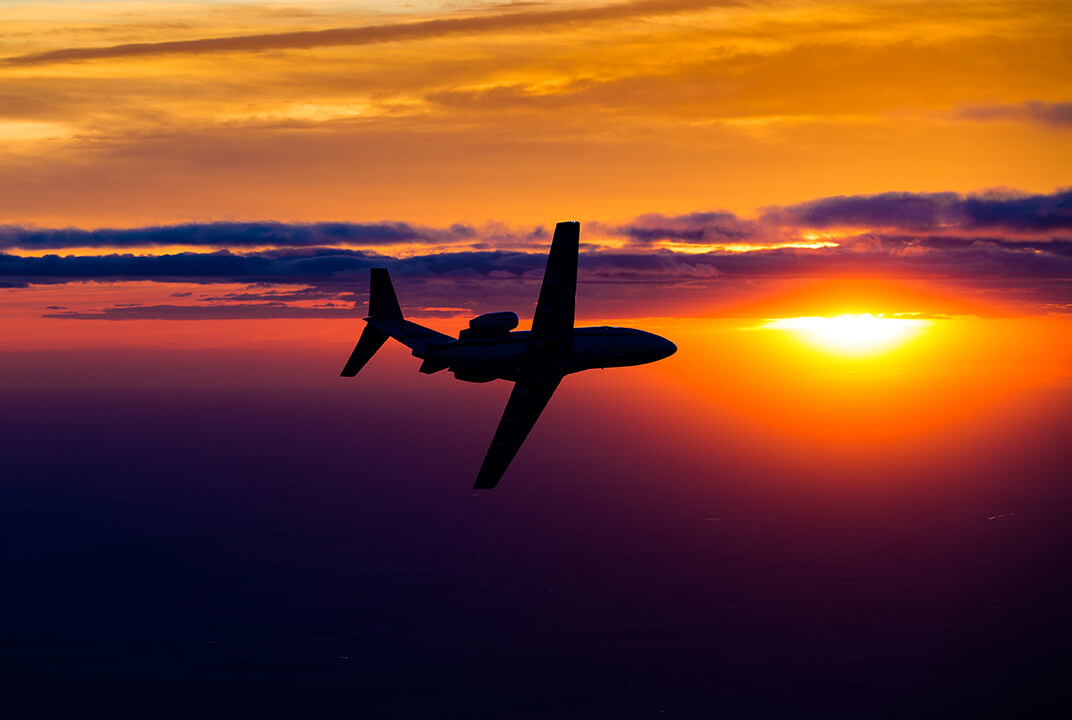Insight | The evolution of business jet connectivity - from 2.4 Kbps to 20 Mbps
The evolution of business jet connectivity - from 2.4 Kbps to 20 Mbps
Aviation
Inmarsat Aviation's Bill Rowell takes us on a journey from the first SatFone he helped install to the full speed and capacity of award-winning Jet ConneX.
Business jets have come a long way. Not only are they getting faster at transporting their passengers from Point A to Point B, but they have made great technological advancements. For example, thanks to our ongoing innovation and many years of experience in mobile satellite service, our business aviation customers have come a long way from simply being able to allow their passengers to make a phone call in the air. They are now able to offer fully connected productivity and entertainment anywhere passengers travel in the world.
How has this been made possible?
Well, to give you some insight into the steps along the way, I’d like to take you on a journey that starts with my first exposure to satellite communications. Back in 1992, I was involved in leading a team of installation and integration engineers that were responsible for installing Honeywell’s multi-channel L-band satcom systems on the world’s airlines and business jets.
My first actual installation was the Racal SatFone on a corporate DC-8 for a large international oil company. You see, Racal was fully partnered with Honeywell at that time to produce the MCS-6000, which just so happened to be same form-fit as their legacy SatFone.
Both systems comprised three Line Replaceable Units (LRUs) with a total size of 18 MCUs (Modular Concept Unit). As a point of reference, the dimensions (L x W x H) of a single MCU are 12.76” x 1.27” x 7.64” (32.41cm x 3.07cm x 19.41cm) and multiples thereof.
The system included a six MCU Satellite Data Unit (SDU), a four MCU Radio Frequency Unit (RFU) and an eight MCU High Power amplifier (HPA) and weighed about 65 pounds (29.5 Kilos). And for all of this, the operator got just one channel of Sat Voice with a data rate of 2.4 Kbps.
However, in a matter of few short months, that operator was able to increase the number of channels from one to a whopping six, just by swapping out the single channel SatFone with a brand new MCS-6000.
The evolution of satellites
Then of course, with the evolution of Inmarsat’s fleet of satellites, operators were able to enjoy enhanced speeds and capabilities, as we added Swift64 (64 Kbps) or 128 Kbps by bonding two channels, followed by SwiftBroadband which offered speeds up to 423 Kbps per channel. So, in just a few short jumps we had increased bandwidth to the aircraft considerably.
And now, there are literally thousands of business jets that stay connected with our L-band services with terminals which are as small as just two MCUs. It’s impressive to think how far we have come in such a short time.Along with the increased bandwidth, the hardware manufacturing partners were able to reduce the size and weight of their terminals. When that original corporate DC8 was replaced with a B767, the owners also experienced a satcom upgrade and could then enjoy seven Inmarsat Classic Aero voice/data channels and two SwiftBroadband channels in a much smaller hard configuration.
Next generation GX
With the introduction of our Global Xpress (GX) constellation of satellites, our award-winning business aviation service Jet ConneX currently provides more than 700 business jet operators with the fastest broadband speeds in the industry and data rates of up to 20 Mbps.
And this capability is provided with a size, weight and power form-factor much smaller than that of the original MCS-6000. Jet ConneX operators use our GX broadband network for any number of things, many of which you most likely use in your own home or workspace.
Even five years ago, it would’ve been hard to imagine yourself jetting across the globe at an altitude of 45,000 feet and speeds of 500 mph, whilst you had live video chats with your family and friends, or conducted an important video conference call, just in time to close that big deal.
Have you ever wondered exactly how our business aviation customers’ passengers are using broadband? During a review over a 12-day period last year, we were able to gain this kind of insight, as we analysed over 100,000,000 records from our business jet customers and in the chart you can see what we observed.
It seems not much changes when people are in the air and consuming data, but that in itself is an incredible statement. We shouldn’t take for granted the leaps and bounds that we have made here at Inmarsat in the 30 years we have been operating in the aviation sector. And with the technology roadmap we have mapped out for the future, it’s exciting to think of the journey I’ll be looking back at in five years’ time.
About the author
Bill Rowell provides technical sales support within Inmarsat Aviation’s Business and General Aviation (BGA) segment. Based in the United States, he is the technical liaison between our engineers, VAR business managers, VARs, VAMs, OEMs, MROs, and end customers. Before joining Inmarsat in 2017, Bill spent 30-years with our long-time partner, Honeywell.


